McDonnell ХP-67. Fighter for Batman. USA. 1941
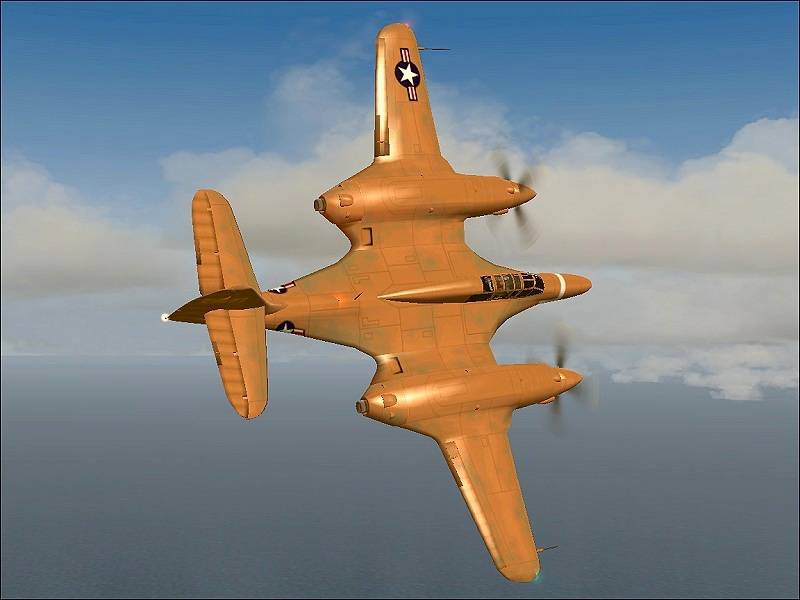
Back in 1939, the United States Air Force announced a competition to create a modern interceptor fighter with high flight characteristics. 27 November 1939 was a specification (technical requirements), which served as the basis for the announcement of the competition R-40C-II. Interested firms were familiarized with its terms. 18. MacDonnell decided to take part in the announced competition and soon the Model I project was presented to the military. Its main feature was the layout of the motor group. The engine, and it had to be either Allison V-1939, or
Pratt-Whitney H-3130, located behind the cockpit and through an angular transmission rotated two pushing screws installed in the nacelles on the wing.
After reviewing the Air Force, the project was rejected on the basis that the aircraft’s mass was too large, and the novelty of the proposed scheme would require a large amount of research and, therefore, increase development time. The last argument now seems rather comical, since the fighters that won the competition - the double-girdle Valty XP-54, the "duck" Curtiss-Wright XP-55 and tailless Northrop XP-56 - all past years with enviable consistency appear on the pages of the books devoted to the most unusual in the world of aircraft. Despite the refusal, the Air Force showed interest in further developing the project and already on 30 in July 1940 they presented the Model II variant - a heavy tracking fighter with two engines Continental XI-1430-17 / 19 with an 1150 power. and a crew of two. But a month later the refusal followed. The military considered that the declared flight characteristics do not correspond to the cost of development. But McDonnell with a purely Scottish stubbornness continued to improve the project and after some time presented the Air Force Model II-A. 22 in May 1941 was issued an official order for the design of the fighter, which was assigned the designation MX-127 (July 29 1941 was changed to XP-67), and October 29 followed the order W535-AC-21218 for the construction and testing of two prototypes. Among other things, it stipulated the construction of a full-sized aircraft mock-up and full or partial mock-ups of various structural elements for testing in wind tunnels.
According to the project, the speed of a fighter with two motors with an 1150 horsepower. should have exceeded 755 km / h with a take-off weight of not more than 8425 kg. But, if there was such a plane, the real weight of which would correspond to the design, it would immediately fall into the annals stories aviationeven having ostrich flight data. In general, the difference between real and design weights is, as a rule, an indicator of the number of changes and improvements made to the design - the larger it is, the more the real airplane differs from the project. This cup did not pass and XP-67. First, the armament was changed - instead of the four 20 mm guns and six 12,7 mm machine guns envisaged by the project, they decided to install six (!) 37 mm M-4 guns (an option with a 75 mm gun was also considered). After this and a number of other changes, the design take-off weight increased to 9060 kg, and in the end, the normal take-off weight of the prototype was 10 tons (without weapons and a pressurized cabin).
The full-size mock-up was ready in the spring of 1942, and on April X, the mock-up commission was held. As a result of its work, the following major changes were made to the structure: the nose was extended by 15 mm, the chassis scheme was completely changed (instead of the wing, the main pillars were retracted into the engine nacelles), and the tie rods were replaced with cable wiring. After the final approval, the model was “dismembered” into two parts, the right of which was sent to Wright Field, where in the period from May 17 to June 380, 26 was tested for serviceability. After another change, they successfully completed in October of the same year. As the attentive reader can notice, the process of creating the XP-4 went very slowly - it was only in July 1942 that the full-engineered nacelle began to be purged in a NASA wind tunnel at Langley Field to determine its wave drag. After the test, we had to change the design of the air intakes and air ducts of the cooling system and re-take the measurements (although they were already held at Wright Field), which ended on November 67.
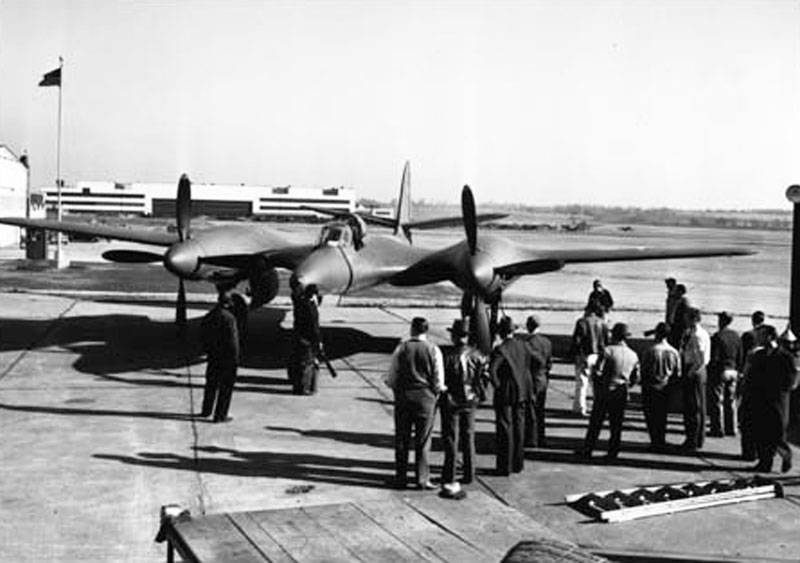
In parallel with the tests, the construction of the first prototype (# 42-11677), which was rolled out of the assembly shop in St. Louis 3 December 1943, was carried out. The XP-67 was an all-metal twin-engine midplane. A very unusual view of the fighter provided the appearance of the fuselage and engine nacelles. The fact is that in accordance with the then ideas about aerodynamics they were shaped like a wing profile. In the forward part of the semi-monocoque fuselage, there was a niche of the nose landing gear, and behind it was a spacious cockpit with a sliding flashlight. According to the project, it was supposed to be airtight, but to accelerate the pace of testing on the prototype, it was decided to install it later. Wing - two-spar, entirely made of light alloys. It had a transverse V - 3╟, width at the root of 3,25 m and 2,37 m at the end. Each wing consisted of two parts - internal and external. Internal constructive part of the fuselage and included a weapons bay and a nacelle. In the root part, there were large covers that ensured a smooth connection of the fuselage with the wing and gave the latter a very unusual plan. The outer part had a trapezoidal shape and docked with the inner one in the area of the engine nacelle. The horizontal plumage had a transverse V - 5╟. All control surfaces had metal lining and were made according to a single scheme - a torsion-like sock of caisson type with ribs and skin.
The power plant consisted of two twelve-cylinder water-cooled engines Continental XI-1430-17 (right) and -19 (left) rotated four-blade variable-pitch propellers with a diameter of 3,25 and m. horsepower xnumx A combat mode was provided in which the motors could during the 23 min. develop xnumx hp at a height of 1350 m. The fuel was placed in four protected fuel tanks in the wing and fuselage, with a total capacity of 5 l. For its unusual appearance, the fighter received the unofficial name "Moonbat" - a kind of night bat vampire.
As mentioned above, there was no hermocabine on the plane, and instead of armament, carbon dioxide tanks were installed for the fire extinguishing system. As subsequent events showed, this precaution turned out to be superfluous.
Immediately after rolling out and ground inspection, we proceeded to the first stage of testing - ground runs. But December 8 had to stop them because of the ignition of oil tanks as a result of a malfunction of the exhaust system. After changing the oil tankers, the plane was transported by car to Scott Field (Illinois) at the end of December. There, on January 6 1944 (one year later than planned), E. Elliot raised the XP-67 into the air. But the first flight lasted only six minutes, since there were problems in the power plant. Ground inspection showed that the cause was overheating of the exhaust pipelines. This problem was solved by installing a steel partition and refining the cooling system, after which the aircraft successfully completed two more flights.
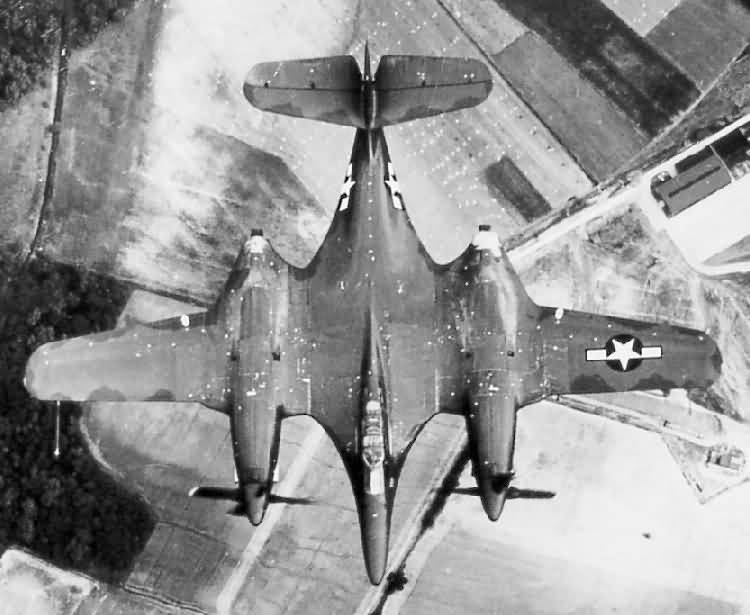
But in the fourth test flight of 1 in February, 1944 was again let down by the power plant - the screws started spinning on both engines, which caused the bearings to fail. Since there were no spare engines available, the car was transported to the factory airfield of McDonnell in Lambert Field, where a number of changes were made to its design during forced downtime. In particular, they installed additional air intakes on the engine nacelles and raised the horizontal tail unit upwards on the 305 mm.
Flight tests resumed 23 March 1944 and passed without any special incidents, although the work of the engines caused constant criticism. Therefore, the company constantly bombarded the Air Force with proposals for the replacement of engines. Even offered options such as a combined power plant - two piston engine Allison or Rolls-Royce and a pair of turbojet engines. But the military stood their ground and only ordered to install a new, more powerful (2000 hp in takeoff mode), a modification of the Continental with water injection into the cylinders. Between 11 and 13 in May, 1944 was flown by three Air Force pilots. They regarded the fighter’s flight characteristics as normal, although there was a tendency to fluctuations like the Dutch Step, but noted the insufficient engine power, which affected the length of the run-up and climb.

Meanwhile, the XP-67 tests continued on their own, changes were made to the design, and in the fall of 1944, the aircraft was to be transferred to the customer for testing. But 6 September 1944 g., During the usual factory flight, the fire started the right engine. Elliot managed to land the plane, but he was no longer subject to recovery. By this time, the fighter raid was just 43 hours. They certainly say: “the first pancake is a lump”, although here the “pancake” was rather burnt. Given the low readiness of the second prototype and the promising characteristics of jet planes, 24 in October 1944 of the Air Force terminated the contract with the Mac. Thus ended the story of the unlucky firstborn firm McDonnell.
TTH:
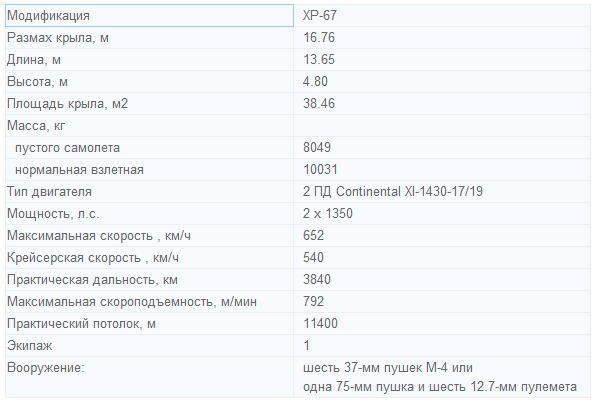
Variants of the alternative P-67 with TRD and swept wings.
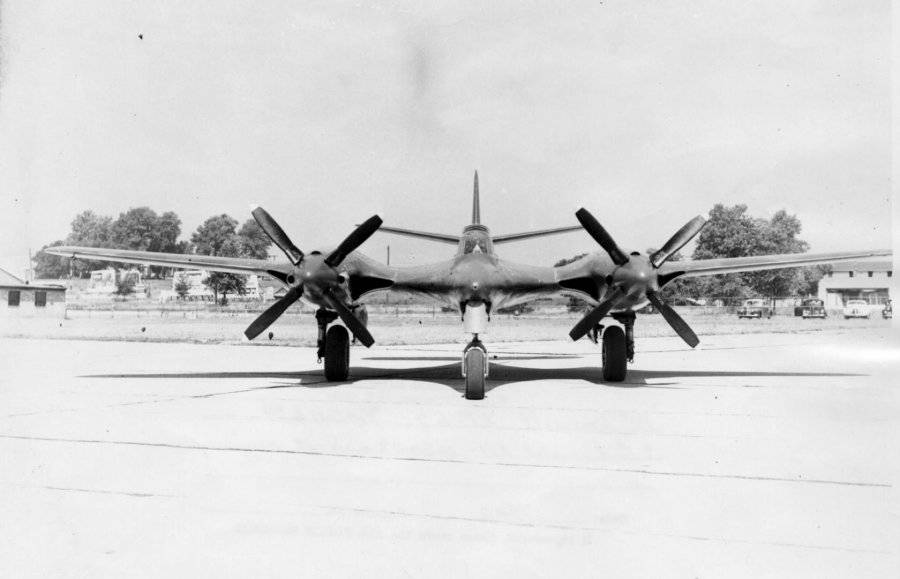
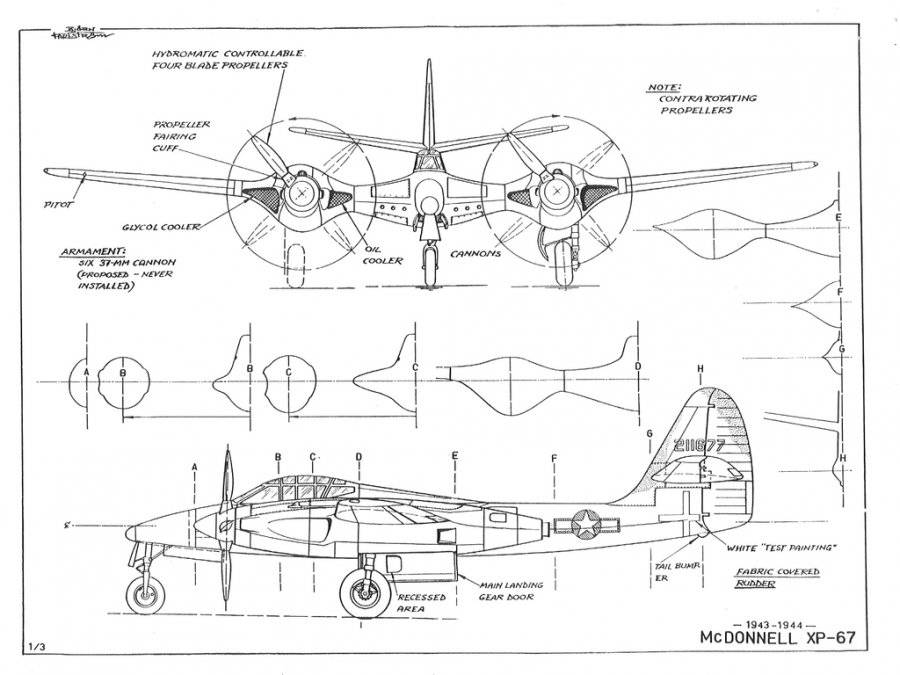
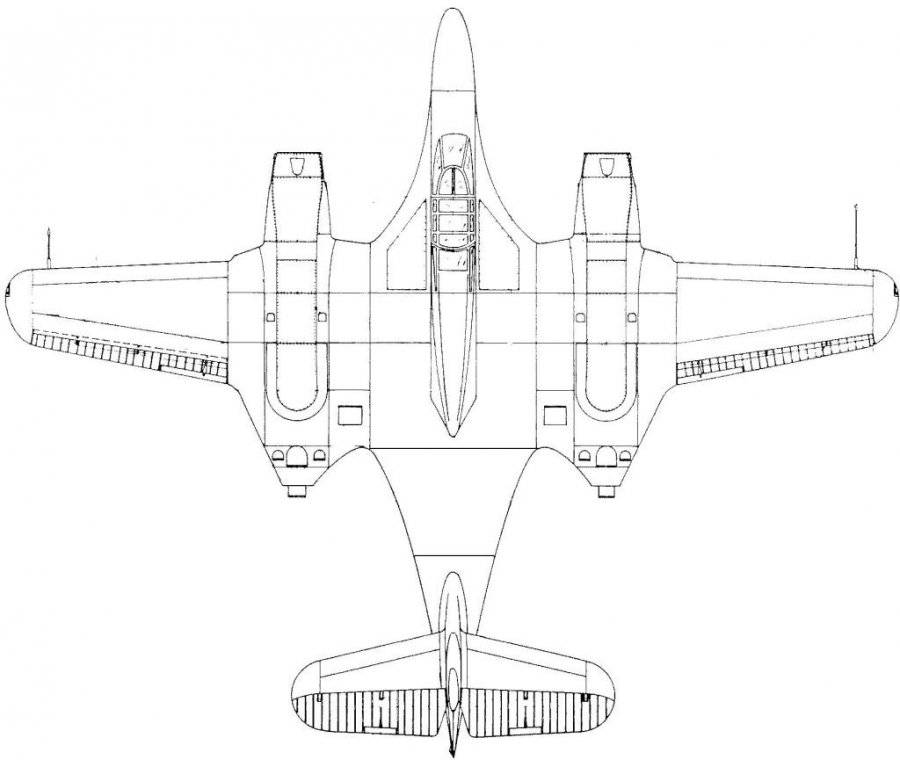
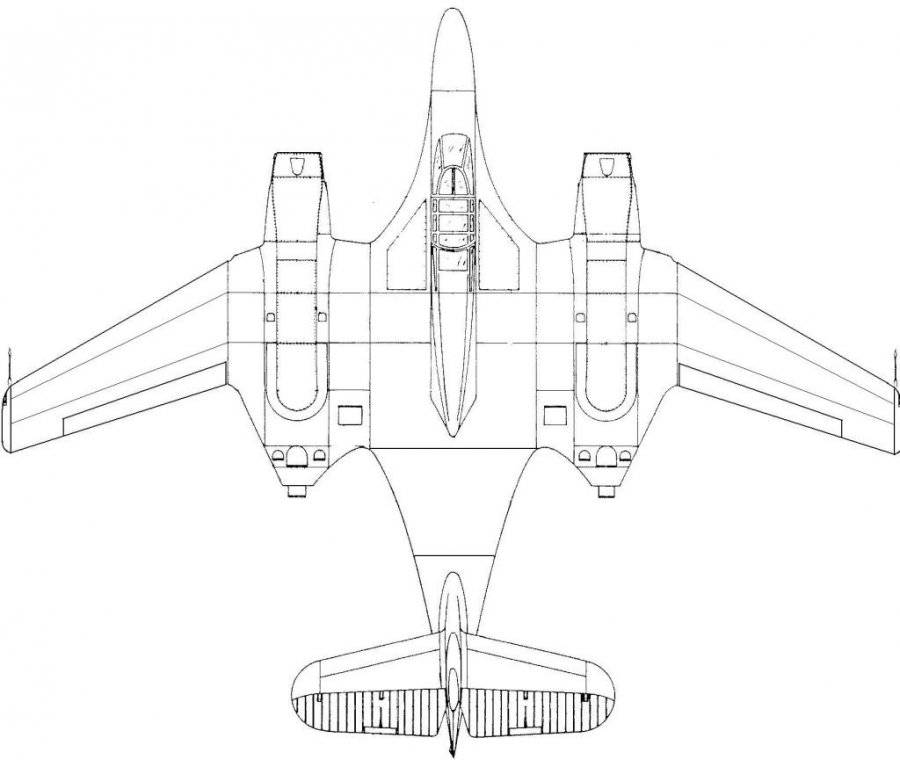
Information